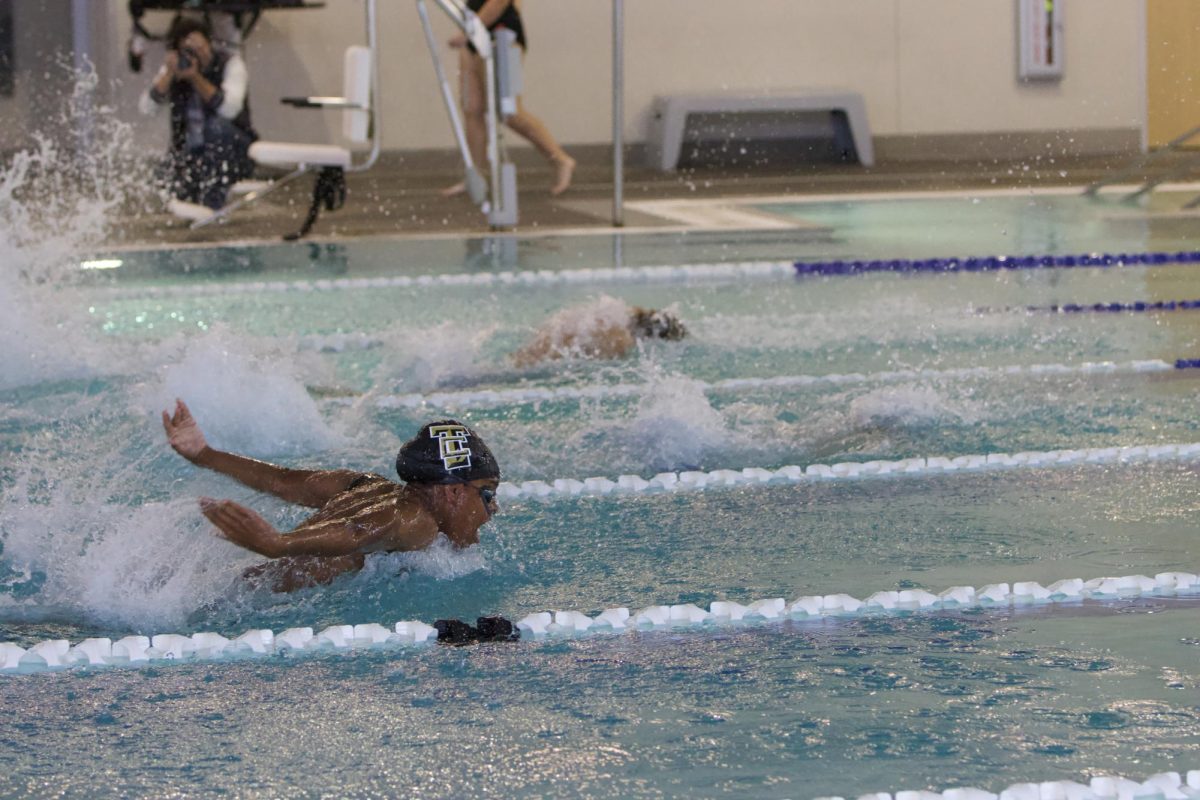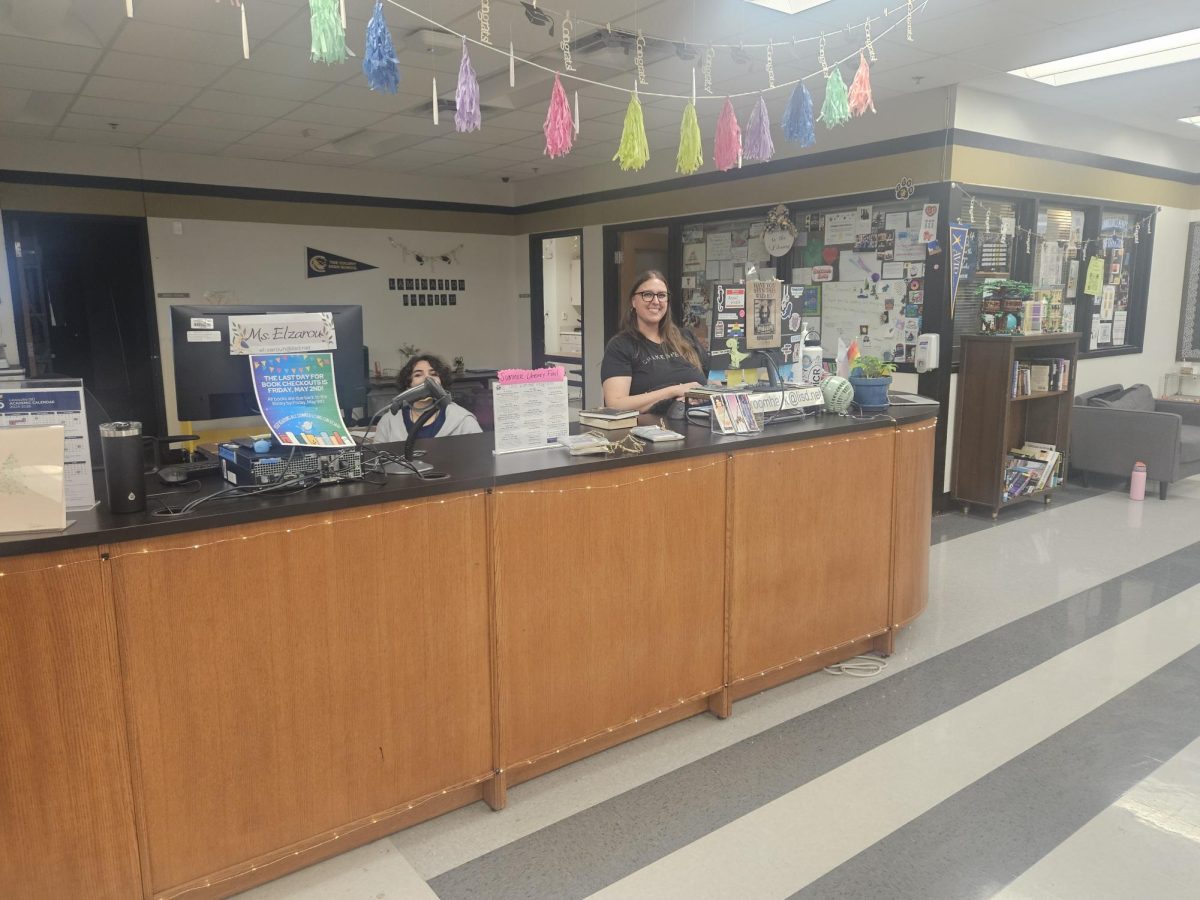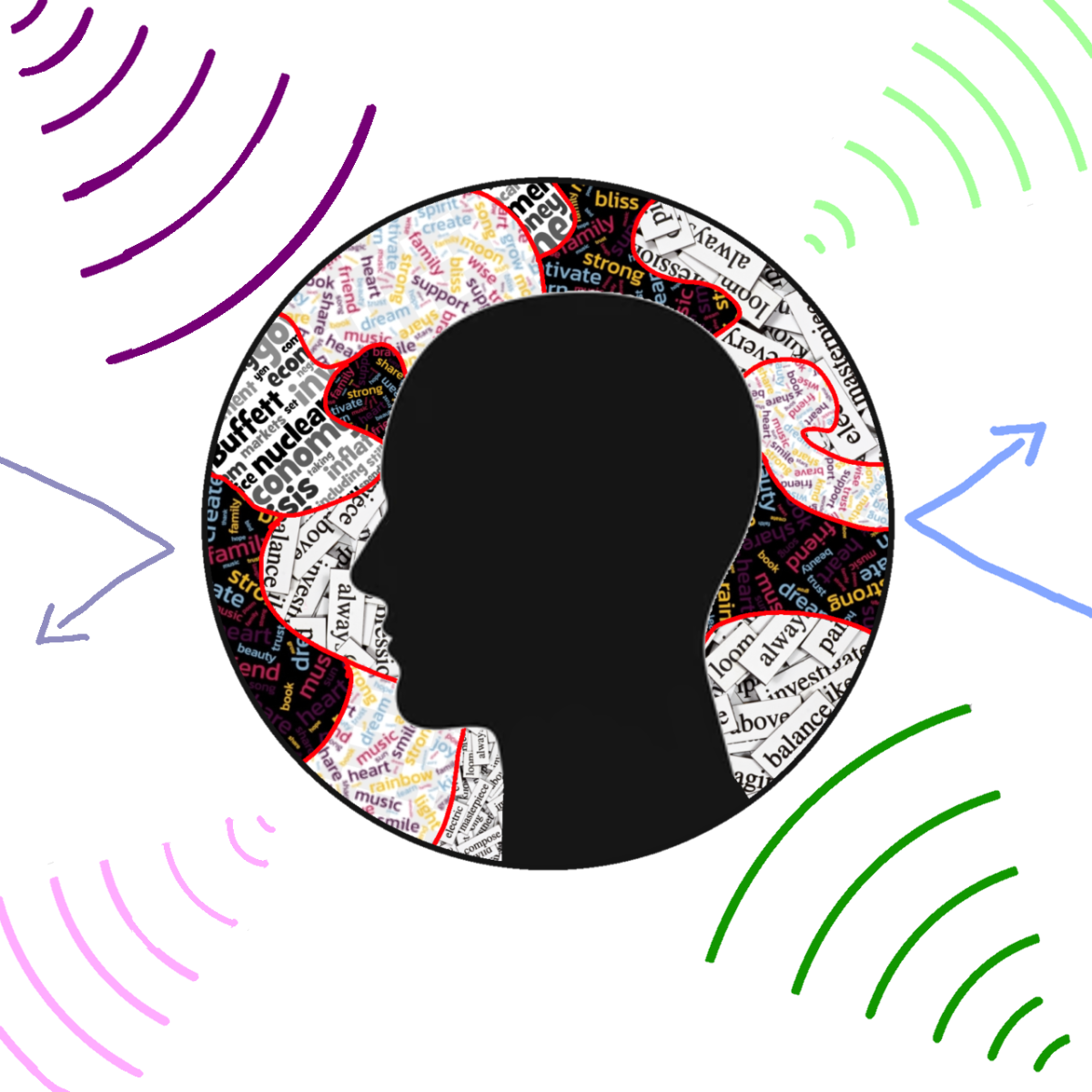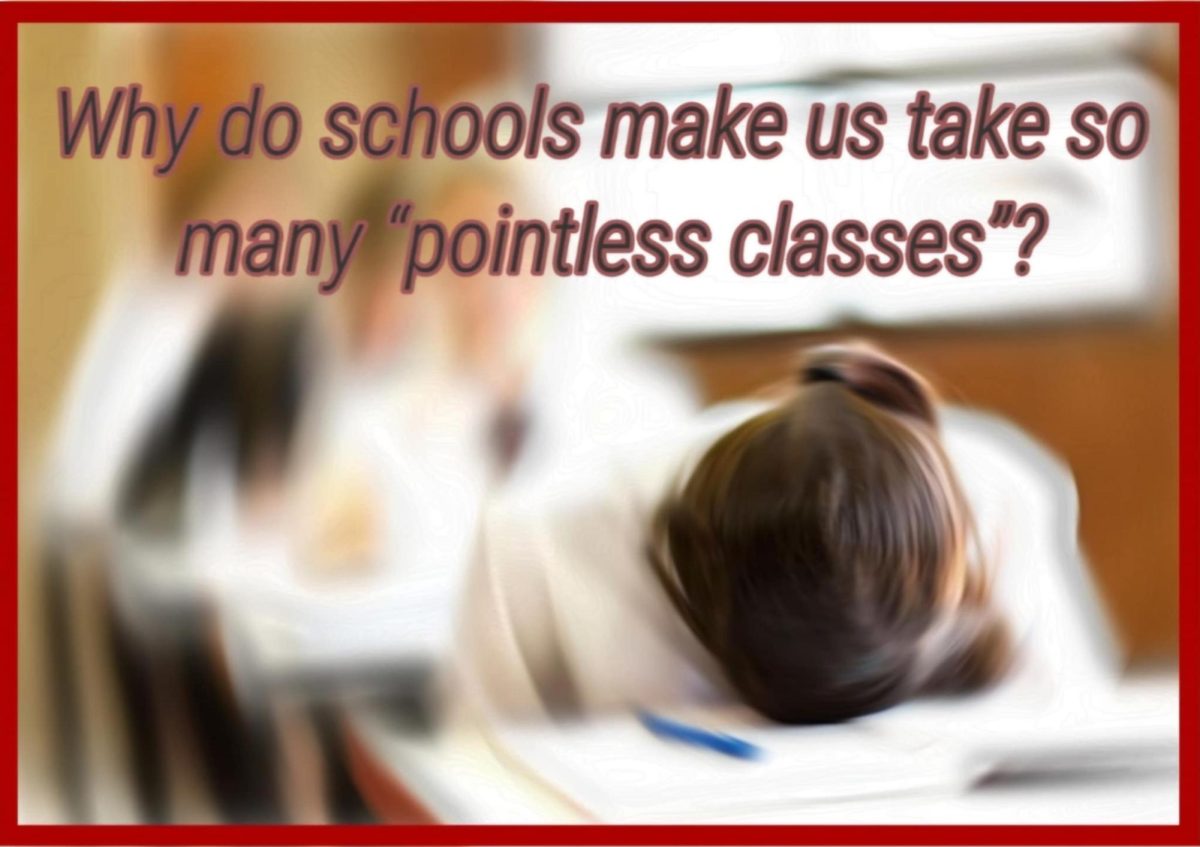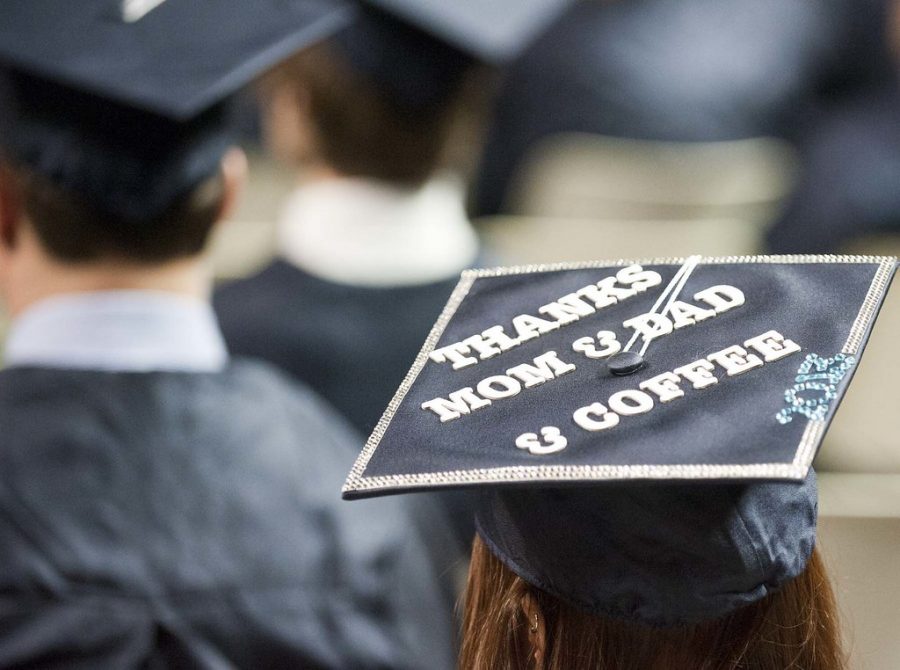I have to imagine that nearly every teacher has, at some point, gotten the question, “When are we going to use this in the real world?” The answer may vary from teacher to teacher. Some will try to give examples of when you may use it —I had one geometry teacher who explained that we might use geometry to calculate things like the amount of wallpaper needed to properly cover a bedroom. Others will simply shrug their shoulders and say “well, you probably won’t ever use it but the state says you have to learn it, so I’m here to teach it”. I wouldn’t claim to be smarter than any of my teachers, but just as a thought exercise, today I’ve set out to answer the age-old question: Why do schools make us take so many “pointless classes”?
The first thing that we need in order to understand why we take these classes today is to examine why we began taking them in the first place. The Center on Education Policy explains how, during the late nineteenth century, educational reformers, such as Horace Mann, advocated for free education given to all children, emphasizing the “three Rs” (reading, writing, and arithmetic). By 1892, the National Education Association’s Committee of Ten (a committee that led education reforms in the late 1800s) established required courses such as English, mathematics, history, and science. The Committee of Ten also standardized the 8-hour school day and 5-day school week. The reason for all this was because, at that point in history, the most common jobs were factory jobs —with 8-12-hour days working 5-6-day weeks. So, the purpose of school was, in part, to prepare children for the workforce they would enter (and, perhaps, to have somewhere to put them whilst their parents were working in said factories). Additionally, most required courses were not meant to be directly applicable to daily life but rather to develop problem-solving abilities and teamwork skills.
Now that we understand why the U.S. school system is structured this way, we can see part of the problem: factory jobs are far less common today. In fact, jobs with flexible hours and creative work are becoming increasingly more common. Yet, we still use the same education system designed for a workforce that is, frankly, becoming obsolete —According to a 2019 Oxford Economics report on automation titled How Robots Change the World, 20 million manufacturing jobs are expected to be replaced by robots by 2030. So, with students going increasingly into fields that are less strenuous, and into those that are more creative and personalized, is there still any benefit to continuing to use the same 130 year old school system?
Well, some may say that, regardless of profession, people can still benefit from learning problem-solving skills and teamwork abilities. But that, of course, raises the question: does school actually provide students with these skills? Not exactly. You see, research published in a 2017 study by the Journal of Education and Learning suggests that traditional American schools’ emphasis on memorization and standardized testing may actually hinder students from developing problem-solving skills; while many classes may provide projects and opportunities for critical thinking, most “really important lessons” —final exams, midterms, SAT, ACT, etc— only really involve memorization and note taking, this leads many students to become somewhat robotic in their thinking process in order to succeed in school; this is compounded by students who refuse to robotize their mind being punished with bad grades. So, while many educators may make a point to provide many opportunities for students to exercise their brains, those efforts are often undermined by a system that places so much value on simplified thinking: each question has only one answer, which can be reached by only one process, and it is only your own fault if you cannot grasp it.
But teamwork, you may say, surely schools teach us teamwork abilities, right? Well, if you’ve caught on to the theme of this article, you can probably guess the answer: no. You see, analysis from the National Research Council suggests that because U.S. schools prioritize individual performance, students often graduate with underdeveloped teamwork skills; allow me to explain. Most US schools follow the same general formula, part of that being that after every class, each student gathers their things and walks independently to their next period; the US is actually an outlier in this regard. You see, in most other schools around the world —Latin America, Asia, and many parts of Europe— students stay with the same classmates all day, all year. Why is this significant? Well, when students spend the entire school day in the same group, they naturally form closer bonds and learn to navigate conflicts with peers; this practice also encourages a sense of unity, whereas the former can often make students feel entirely broken off from their peers, developing a sort of “every person for themselves” mentality. Beyond that, on the occasions in which students are required to work together —group projects, team sports, etc.— students often develop mindsets that are actually anti-teamwork; when working with other students, Many resent their teammates for not pulling their weight, while others see little incentive to contribute, feeling that individual performance on exams like the SAT, finals, and AP tests is what truly matters. This lack of teamwork abilities has a real effect. In 2019 a survey from the Partnership for 21st Century Learning found that while 75% of employers believe that teamwork is a crucial skill for the workplace, only 28% felt that schools had adequately prepared their employees for collaborating with one another.
Given the evidence I’ve presented above, it’s quite obvious where my argument is going, but I’m sure that not all my readers are yet wholly convinced of my viewpoint; so, allow me to address further counter arguments. For starters, some may say that school teaches students discipline or work ethic; I would concede that school is certainly intended to teach work ethic, however, that is rarely what it actually does in practice. Put simply, American schools teach compliance: show up at the crack of dawn, cram for this test, memorize this formula. Most of what students learn this way is forgotten as soon as the test is over. That is not true work ethic; that is survival of the eidetic. School should be for learning valuable skills, if I wanted to play a memory game I would buy a Simon Says. Others may say that we couldn’t seriously consider parting with our beloved standardized testing, it’s a simple and objective way to measure a students intelligence; this idea stems from an outdated idea of intelligence and it not only functions to make students with different learning styles feel as though they’re stupid, it also keeps truly skilled and intelligent people from having prosperous careers. In every classroom there are dozens of different skill sets and learning styles and so many go completely unappreciated, worse yet, students can even be punished when their personal skills and mindsets do not align with what is rigidly expected of them by standardized tests. Some may point out that, whether we like it or not, colleges prefer students who excel in this system. But that’s part of the issue, isn’t it? We assume that every student is suited for college or, at least, that those who attend are somehow more valuable than those who don’t. While college can be a great route for some —I myself am very much intending to go to college— it’s worth acknowledging the millions of very necessary careers that require skill sets outside of academia; people in these careers are no less intelligent than a professor or a scientist —sure, most carpenters may not have a clue what a synapse is but ask a psychiatrist to build a staircase and they’ll likely be just as lost. So, if we can acknowledge that not all students are made for college, and moreover that non-academic careers can be just as necessary, why are we still insisting on making each and every student struggle through a system to prepare them for careers which they often have no interest in? Could you imagine how much better and more efficiently society would run if we taught children that all skill sets are valuable and helped them discover and excel at their own passions? Of course, some will still enjoy and benefit from traditional schooling, but we needn’t waste everyone else’s time. Instead, we should provide more opportunities for students with less academic skill sets to try internships, apprenticeships, and other real world experiences related to their craft.
Now, the question remains: is there anything we can do about this? Yes, and many countries around the world have. Take the Finnish education system, for example. This system places a high emphasis on equality among students, mental and physical health, stability, and quality of life. It also de-emphasizes standardized testing, with students taking only one standardized test at the end of high school. This education system has better outcomes and the statistics back me on this. For starters, Finland’s emphasis on equality among students and on quality of life is clearly effective as the Organization for Economic Cooperation and Development consistently ranks Finland higher than the U.S. in equality and Finland ranks 3rd overall in quality of life, OECD has also crowned Finland as the Happiest Country in the World. Additionally, the World Health Organization finds that, thanks to a school system which makes students feel more comfortable, safe, and uninhibited, Finland consistently ranks higher than the U.S. in overall teen mental health and lower than the U.S. in teen suicide rates. Furthermore, The Institute for Health and Welfare finds that the Finnish education system’s emphasis on unity, emotional stability, and early intervention contributes to Finland’s significantly lower crime rate. And Finland is not the only country that has made strides in improving education. Countries such as Iceland, Sweden, Singapore, the Netherlands, Rwanda, Japan, and many others have done the same. Obviously, the U.S. is its own country with its own population, and what works for others may not always work for us. But that doesn’t mean we shouldn’t keep trying. There is no reason we cannot adapt to the ever-changing needs of society and our youth. I hope the future of education won’t be about forcing each and every student into the same outdated mold but rather about helping each student reach their fullest potential.







